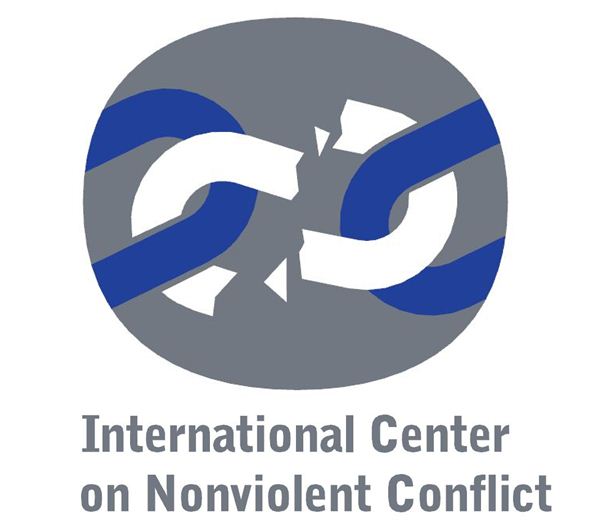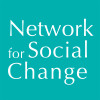No name
Provides historical background to the Indian farmers protests against the Modi government's 2020 farm laws and draws parallels with earlier movements since the 1970s for stronger government support for agriculture.
An informative survey of the protests that broke out in April 2021 and the immediate government responses. The articles suggests the demonstrations were essentially a revival of the 2019 movement that was interrupted by Covid-19, but notes differences - for example the much greater protest in rural areas in 2021. Glotsky also situates the protests in the context of Columbia's social and economic problems, which have been exacerbated by the impact of Covid.
The article describes the change in police tactics from earlier protests, including immediate intervention to stop obstruction of roads and the use of batons. It then discusses briefly the changes in XR's own approach: the emphasis shifting from 'sounding the alarm' to demanding why there is not 'an emergency response'.
See also: 'XR's Latest Rebellion', Peace News, October-November 2021, p.7.
Outlines briefly plans for a fortnight of action directed at stopping fossil fuel investment and focused mainly on the City of London. On the same page there is a brief report on XR Scotland's appeal to all XR activists to respect XR Scotland's 'COP 26 Rebel Agreement' to show respect for the most vulnerable local communities and to demand a just transition for workers and local communities.
Article discussing the rising number of law suits being brought in the US by cities and states against fossil fuel companies for environmental damage and for hiding information about the dangers of their operations. It also comments on how courts and activists are influencing the board membership of oil companies. But McGreal notes that although there is mounting pressure on the companies, the court process is very slow.
The author compares the Nigerian movement with Black Lives Matter and discusses within the wider context of Nigerian politics EndSARS has not been successful.
Kaur explains the social and economic context within which the Modi government introduced the new farm laws. These, he argues, will result in an unending cycle of structural adjustments, disinvestment and privatization, that farmers fear will lead to debts and dispossession. He outlines how the farmers are, despite intimidation, developing solidarity across caste, class, religion and regional divides.
This article provides a useful overview of the immediate and longer term causes of the May 2021 protests, the responses by the government and the international reactions. It notes that New York Times videos showed police firing on demonstrators, as well as gas canisters and other 'low lethal' devices, but also considers briefly whether the protesters too have used violence and the impact of road blocks.
Reports the jubilation of pro-choice demonstrators in Buenos Aires after the Senate (which had voted down legalization of abortion in 2018) passed a law allowing termination in the first 14 weeks of pregnancy for any reason. Argentina became then third South American country (after Uruguay and Guyana) to decriminalize abortion, and there are likely to b repercussions across the region. The authors summarize the five years of mass campaigning by the women’s movement in Argentina that led to this result.
See also: ‘Green Wave, Blue Water: Abortion in Latin America’, Economist, 9 Jan. 2021, pp.41-2.
This article discusses the significance of and probable repercussions of the legalization of abortion in Argentina, in the context of the generally very restrictive position in many other countries in Latin America and the Caribbean. The article notes the possible positive repercussions in Peru and Mexico and that legalizing abortion may be raised in proposed constitutional change in Chile. But the article also warns that the Argentinian law will mobilize forces strongly opposed to abortion.
This interview with Joseph Tucker provides an immediate analysis of the October military coup, noting that steps had had been taken towards it over several months. The analysis also considers the regional and international context of the October 2021 coup and how the protests against military rule might develop.
The report examines the significance of the mass strikes and demonstrations in Colombia in 2020-21, examines the government's response, and also suggests some of the dangers involved. It notes that far right vigilantes supporting the police had fired on demonstrators, and that in some areas criminal gangs were taking advantage of the social disorder.
This article explores the role of women in the farmers' protests in the context of 75 per cent of rural women working in agriculture. The authors note that this sector has been left behind in the boom accompanying the previous three decades of economic liberalization.
See also https://time.com/5942125/women-india-farmers-protests/ and https://thediplomat.com//2021/01/indias-invisible-women-farmers//
Overview of farmers protests round Delhi after six months, including the impact of Covid-19. Jodkha also summarizes why the farmers are protesting and what they had achieved, and also their future plans. The article includes links to more detailed examination of specific issues, such as the role of women.
A report on the resistance movement six weeks after the coup. This is one of a number of relevant articles carried by The Conversation (an independent international source of news and analysis run by academics) on the coup and resistance to it and on the wider context in Myanmar.
The Guardian spoke to six young indigenous activists from the Ecuadorian Amazon, Chad, Alaska, Sweden, Indonesia and Australia about what they think about COP 26.
This article starts by suggesting the popular resistance in Sudan led the military to make a deal with the civilian politicians they had jailed, but on terms ensuring military control. It also notes the refusal by the resistance committees that led the 2019 revolution to accept power sharing. Muzan traces the evolution from the 2019 revolution to the coup, stressing that political parties had been dominant in the transition civilian government. He also comments on the economic problems, including very high inflation, which had led to popular unrest, which might have encouraged the coup plotters.
The article begins with the arrest of Alejandro Gaitan, who had led peaceful marches during the recent national strike. He was accused of belonging to 'Primera Linea[, a protest collective singled out for attack by President Duque. The collective attacked the government for trying to weaken the movement for change through arrests and court cases.
Kascian explain how a new law to prevent the rehabilitation of Nazism is designed as part of the campaign to suppress Belarus civil society.
Provides profiles of some of the women who have taken to the streets to protest against the military coup and demand a return to democracy.
Hundai examines the predominantly Sikh farmers protests centred on Delhi in the context of the history of religious pogroms in India, and notes that fear of persecution has resurfaced within the Sikh community.
An in depth examination of the Indian farmers' resistance to the 2020 agricultural laws passed by Narendra Modi's government.
See also: https://nationalheraldindia.com/india/why-are-farmers-protesting and https://thediplomat.com/2021/02/past-imperfect-the-future-of-indias-farmer-protests
Following President Joe Biden’s initiative to recommit to the Paris Agreement on climate change and the signing of an executive order halting the construction of the Keystone XL pipeline project, this article emphasises the role of indigenous people within the climate justice movement.
See also: Ambroiggio, Mia, ‘Why We Need to Center Indigenous Voices in Climate Conversations’, Loyola Phoenix, 3 February 2021.
http://loyolaphoenix.com/2021/02/why-we-need-to-center-indigenous-voices-in-climate-conversations/
In the aftermath of the 2016 Paris accords, according to the international non-profit Global Witness, one in three of those killed were indigenous people. This article reports on indigenous voices and their exclusion from COP 26.
See also: If Not Us, Then Who?, Climate Week 2019.
Focuses on the role of indigenous and local people in protecting the planet and fighting for climate justice.
Reports on 18 scientists and researchers standing for election to the new constitutional assembly tasked with creating a new constitution. The scientists are concerned to promote the role of research, but also to use their expertise on such is sues as public health, resource management and climate change.
Provides background to the 2021 military coup in Myanmar.
The authors explain the significance for Sikhs of the date (19 November) of Modi's surprise announcement, summarize the laws to be repealed, and interview a number of protesters who express their distrust and require proof the laws will no longer apply.
See also: BBC, 'Farm Laws: India's PM Narendra Modi Repeals Controversial Reforms', 19 November, 2021
https://www.bbc.co.uk/news/world-asia-india-59342627
Report on Modi's announcement and the laws to be repealed, and on farmers' reactions. Notes celebrations in Punjab and Haryana, but also the refusal to end protest camps until formal repeal by parliament. The report is followed by an analysis by the BBC's India Correspondent.

 The online version of Vol. 1 of the bibliography was made possible due to the generous support of the
The online version of Vol. 1 of the bibliography was made possible due to the generous support of the  The online version of Vol. 2 of the bibliography was made possible due to the generous support of
The online version of Vol. 2 of the bibliography was made possible due to the generous support of